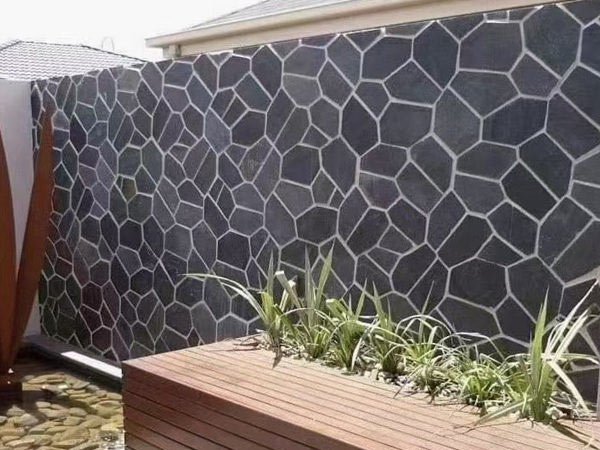Sealing natural stone is essential to protect the surface from stains, moisture, and erosion, especially in outdoor or high-traffic areas. Here’s a comprehensive guide on effectively sealing your stone and maintaining its longevity.
-
 Beżowa, kwarcytowa płyta chodnikowa z szalonym wzorem z Chin
Beżowa, kwarcytowa płyta chodnikowa z szalonym wzorem z Chin -
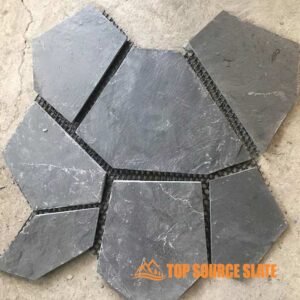 Czarny łupek, nieregularny, przypadkowy, szalony kamień chodnikowy
Czarny łupek, nieregularny, przypadkowy, szalony kamień chodnikowy -
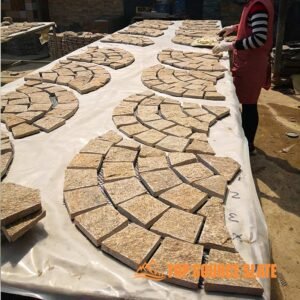 Kamień naturalny, szalony, nieregularny kamień łupkowy do krajobrazu
Kamień naturalny, szalony, nieregularny kamień łupkowy do krajobrazu -
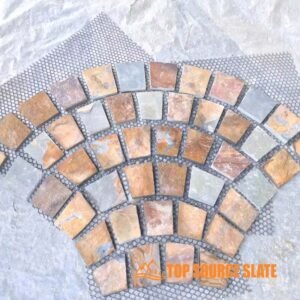 Chińska wielokolorowa mata podłogowa z łupka kamiennego z siatki kamiennej
Chińska wielokolorowa mata podłogowa z łupka kamiennego z siatki kamiennej -
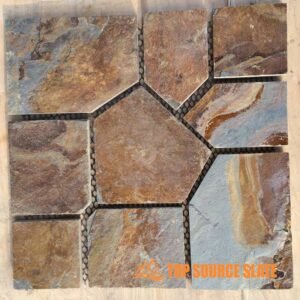 Łupkowa, szalona, nieregularna płyta chodnikowa z siatki chodnikowej
Łupkowa, szalona, nieregularna płyta chodnikowa z siatki chodnikowej -
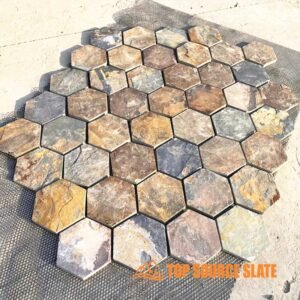 Nieregularna kostka brukowa z łupkiem siatkowym
Nieregularna kostka brukowa z łupkiem siatkowym -
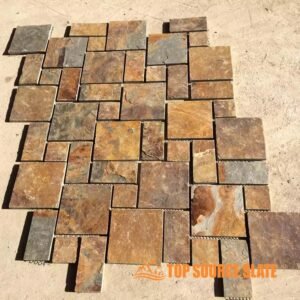 Naturalny zardzewiały kamień chodnikowy z oczkami flagowymi
Naturalny zardzewiały kamień chodnikowy z oczkami flagowymi -
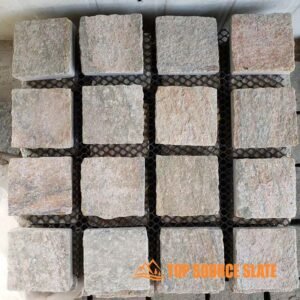 Kwadratowe kamienne płytki podłogowe podjazd z kostki brukowej
Kwadratowe kamienne płytki podłogowe podjazd z kostki brukowej -
 Płytka z siatki kamiennej o okrągłym kształcie, kostka brukowa na siatce
Płytka z siatki kamiennej o okrągłym kształcie, kostka brukowa na siatce -
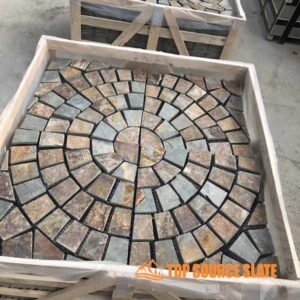 Naturalne zardzewiałe oczka z kostki brukowej Kawałki flag
Naturalne zardzewiałe oczka z kostki brukowej Kawałki flag
-
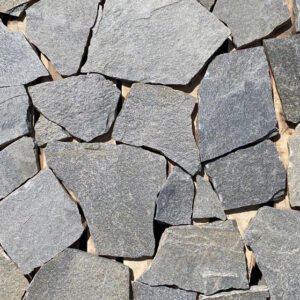 Naturalna, szara, kwarcytowa okładzina ścienna z dzieloną powierzchnią, luźna, kamienna okładzina ścienna
Naturalna, szara, kwarcytowa okładzina ścienna z dzieloną powierzchnią, luźna, kamienna okładzina ścienna -
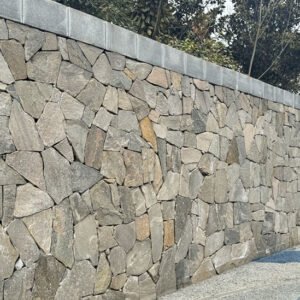 Naturalny kwarcyt, losowe, nieregularne kamienne płytki panelowe do okładzin ściennych
Naturalny kwarcyt, losowe, nieregularne kamienne płytki panelowe do okładzin ściennych -
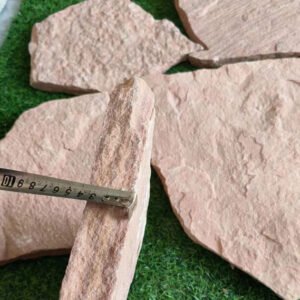 Hurtownia różowego piaskowca losowo luźna okładzina kamienna
Hurtownia różowego piaskowca losowo luźna okładzina kamienna -
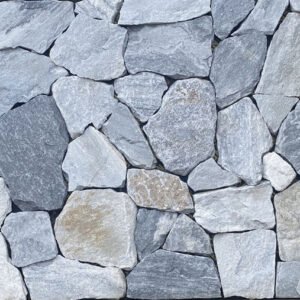 Hurtownia niebieskiego kwarcytu losowo luźna kamienna płytka do okładzin ściennych
Hurtownia niebieskiego kwarcytu losowo luźna kamienna płytka do okładzin ściennych -
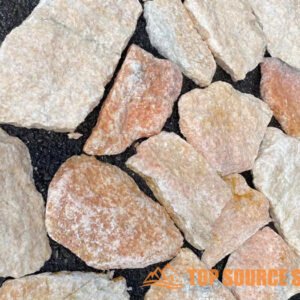 Naturalny, luźny kamień do okładzin ściennych wewnętrznych i zewnętrznych
Naturalny, luźny kamień do okładzin ściennych wewnętrznych i zewnętrznych -
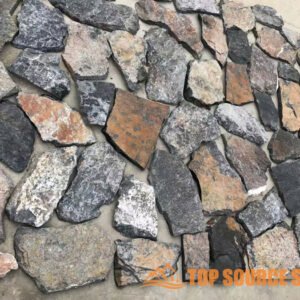 Losowy zewnętrzny kamień naturalny Luźny kamienny fornir Dekoracja okładzin ściennych
Losowy zewnętrzny kamień naturalny Luźny kamienny fornir Dekoracja okładzin ściennych -
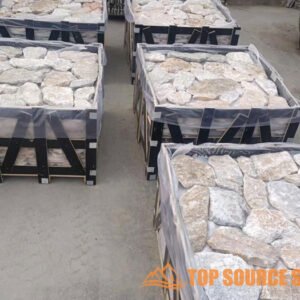 Naturalny, nieregularny, losowy, luźny fornir kamienny
Naturalny, nieregularny, losowy, luźny fornir kamienny -
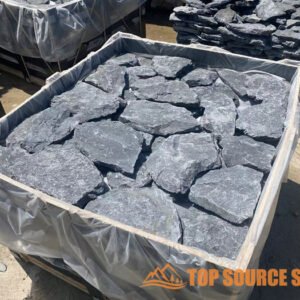 Dostawa fabryczna w Chinach Zewnętrzne naturalne, losowe, luźne kamienne płytki elewacyjne
Dostawa fabryczna w Chinach Zewnętrzne naturalne, losowe, luźne kamienne płytki elewacyjne -
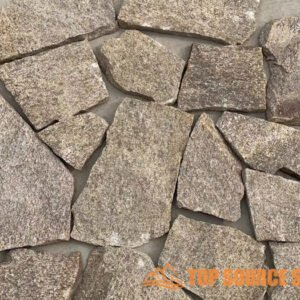 Cena fabryczna Naturalna zewnętrzna, losowa, luźna okładzina ścienna z kamienia
Cena fabryczna Naturalna zewnętrzna, losowa, luźna okładzina ścienna z kamienia -
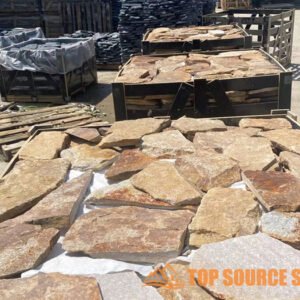 Zewnętrzna żółta, szorstka, losowa, luźna okładzina ścienna z kamienia
Zewnętrzna żółta, szorstka, losowa, luźna okładzina ścienna z kamienia
-
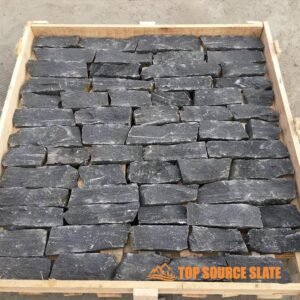 Hurtownia losowych okładzin z suchego stosu czarnego kwarcytu
Hurtownia losowych okładzin z suchego stosu czarnego kwarcytu -
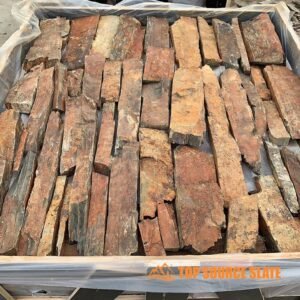 Najwyższej jakości okładzina ścienna z suchego kamienia
Najwyższej jakości okładzina ścienna z suchego kamienia -
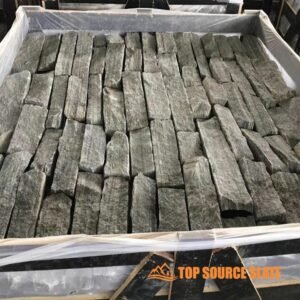 Fabryczna sprzedaż bezpośrednia tania luźna okładzina ścienna z kamienia
Fabryczna sprzedaż bezpośrednia tania luźna okładzina ścienna z kamienia -
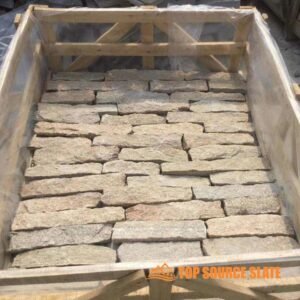 Fabryczna, losowa okładzina ścienna z kamienia naturalnego
Fabryczna, losowa okładzina ścienna z kamienia naturalnego -
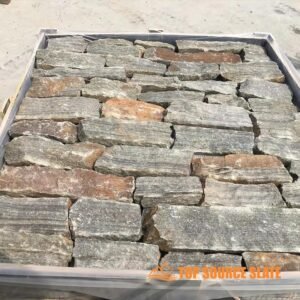 Zewnętrzna dekoracyjna, luźna okładzina kamienna z suchym stosem
Zewnętrzna dekoracyjna, luźna okładzina kamienna z suchym stosem -
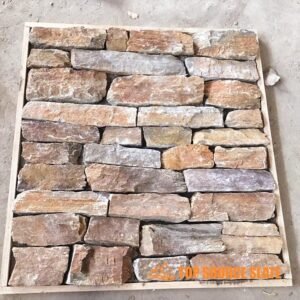 Dostawca z Chin nieregularne okładziny ścienne z forniru kamiennego
Dostawca z Chin nieregularne okładziny ścienne z forniru kamiennego -
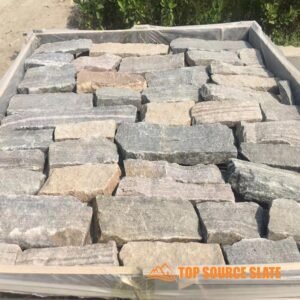 Producent z Chin zewnętrzne okładziny ścienne z naturalnego luźnego kamienia
Producent z Chin zewnętrzne okładziny ścienne z naturalnego luźnego kamienia -
 Producent z Chin, luźny kamień półkowy, fornir z kamienia naturalnego
Producent z Chin, luźny kamień półkowy, fornir z kamienia naturalnego -
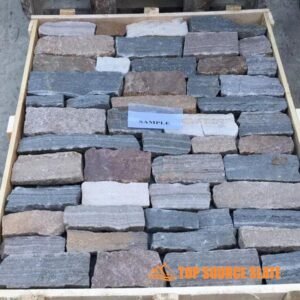 Zewnętrzny kamienny kominek z suchym kominkiem od dostawcy z Chin
Zewnętrzny kamienny kominek z suchym kominkiem od dostawcy z Chin -
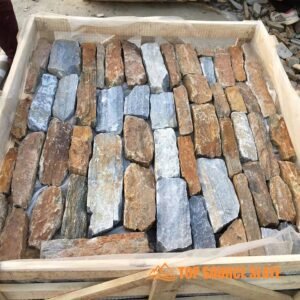 Eksporter z Chin, luźna, sucha kamienna ściana oporowa
Eksporter z Chin, luźna, sucha kamienna ściana oporowa
1. Dlaczego uszczelnianie kamienia naturalnego jest niezbędne
Kamień naturalny, choć trwały, jest porowaty i podatny na wchłanianie wody, plamy i uszkodzenia spowodowane warunkami atmosferycznymi. Uszczelnienie pomaga zablokować przenikanie wilgoci, olejów i innych zanieczyszczeń do powierzchni kamienia, zachowując jego wygląd i integralność strukturalną. Bez uszczelnienia kamień używany na zewnątrz, np. na tarasach lub w kuchniach, może szybko ulec degradacji w wyniku narażenia na działanie czynników atmosferycznych lub rozlania.
2. Wybór odpowiedniego uszczelniacza do kamienia
Podczas uszczelniania kamienia naturalnego kluczowy jest wybór odpowiedniego rodzaju uszczelniacza. Różne rodzaje kamienia mają wyjątkową porowatość i właściwości, dzięki czemu niektóre uszczelniacze są bardziej skuteczne niż inne. Oto bardziej szczegółowy podział:
- Uszczelniacze penetrujące (Uszczelniacze impregnujące): Uszczelniacze wnikają w kamień, nie zmieniając wyglądu jego powierzchni. Tworzą barierę tuż pod powierzchnią, odpychając wodę, oleje i plamy, jednocześnie pozwalając kamieniowi oddychać. Ten typ jest idealny do kamieni porowatych, takich jak wapień, trawertyn i piaskowiec. Uszczelniacze penetrujące są również odporne na promieniowanie UV, dzięki czemu nadają się do stosowania na zewnątrz. Są szczególnie zalecane do wykończeń szlifowanych lub matowych, gdzie błyszcząca powierzchnia nie jest pożądana.
- Uszczelniacze powierzchniowe (uszczelniacze miejscowe): These create a protective layer on the stone’s surface, providing both protection and aesthetic enhancement. Surface sealers can leave a glossy or matte finish, depending on the product. They’re commonly used for polished stones like granite or marble, enhancing the color and sheen while adding protection. However, surface sealers tend to wear off faster than penetrating sealers, especially in high-traffic areas, requiring more frequent reapplication.
- Enhancing Sealers: These are a subset of penetrating sealers that not only protect the stone but also enhance its color, making it appear richer and deeper. They are popular for stones like slate and flagstone, which benefit from the enhanced color that the sealer provides.
- Water-Based vs. Solvent-Based Sealers: Water-based sealers are eco-friendly, less toxic, and easier to apply, but may not penetrate as deeply as solvent-based options. Solvent-based sealers, while more powerful in penetration and longevity, tend to have a stronger odor and require more careful handling during application.
Jak zbudować kamienną ścianę suchego stosu
Jak zainstalować patio z kamienia?
Jak ułożyć szaloną kostkę brukową: przewodnik krok po kroku
3. Preparation: Cleaning the Natural Stone
Proper preparation is key to ensuring the sealer bonds effectively with the stone surface. Here’s a more in-depth guide on how to properly clean the stone before sealing:
- Clear Loose Debris: Sweep or vacuum the stone to remove dust, dirt, and any loose materials that could interfere with sealing. In outdoor areas, use a leaf blower or hose to clear larger debris.
- Głębokie czyszczenie:
- For outdoor stones, consider using a pressure washer to remove ingrained dirt or moss. However, be careful not to damage softer stones like limestone or sandstone.
- Indoors, use a pH-neutral stone cleaner to avoid damaging the stone’s surface. Avoid acidic cleaners such as vinegar, as these can etch certain stones like marble and travertine.
- Spot Treatment for Stains: Stains can become sealed into the stone if not addressed prior to sealing. Use a poultice to lift oil-based or organic stains (such as from leaves or coffee) from the stone. Allow the poultice to dry completely before wiping it away.
- Efflorescence Removal: In outdoor or damp environments, efflorescence (white mineral deposits) may form on the stone. Use an efflorescence cleaner or water and a brush to scrub it off before sealing.
- Drying: Once cleaned, the stone must be allowed to dry completely. Moisture trapped beneath the sealer can lead to hazy finishes or even mold growth. Depending on the stone type and environment, this may take 24-48 godzin.
4. How to Apply Sealer on Natural Stone
Opieczętowanie Kamień naturalny to wieloetapowy proces, który wymaga starannego przygotowania i dbałości o szczegóły, aby uszczelniacz wniknął w powierzchnię i zapewnił długotrwałą ochronę. Oto bardziej szczegółowy przewodnik na temat skutecznego nakładania uszczelniacza na kamień naturalny:
Krok 1: Zbierz materiały
Zanim zaczniesz, upewnij się, że masz pod ręką odpowiednie narzędzia i materiały:
- Uszczelniacz kamienia: Upewnij się, że wybrałeś odpowiedni rodzaj uszczelniacza do kamienia (penetrujący lub powierzchniowy, na bazie wody lub rozpuszczalnika).
- Narzędzia aplikacji: W zależności od powierzchni będziesz potrzebować: pędzel, wałek, opryskiwacz, Lub piankowy aplikator. Opryskiwacz jest idealny do większych obszarów, natomiast pędzel lub wałek zapewnia większą kontrolę na mniejszych, skomplikowanych powierzchniach.
- Sprzęt ochronny: Wear gloves, safety goggles, and a mask to protect yourself from fumes, especially if you are working with solvent-based sealers. Ventilate indoor areas well.
Step 2: Prepare the Natural Stone
Before sealing, the stone surface must be completely clean and dry:
- Czyszczenie: Use a stone cleaner specifically designed for natural stones to remove dust, dirt, and stains. Avoid acidic cleaners like vinegar, as they can damage the stone. For stubborn stains, apply a poultice.
- Drying: Let the stone dry for 24 to 48 hours. Any moisture left in the stone can become trapped beneath the sealer, leading to hazing, efflorescence, or discoloration. This step is especially critical for porous stones like limestone and sandstone.
Step 3: Test the Sealer on a Small Area
Before applying the sealer to the entire surface, test it on a small, inconspicuous area to ensure it provides the desired finish and doesn’t alter the stone’s natural color. Some sealers may darken the stone or add a sheen, so it’s important to see the result on a small patch before proceeding.
Step 4: Apply the Sealer
Once the stone is clean, dry, and prepped, you’re ready to start sealing:
- Start with the Edges: Use a paintbrush to apply sealer to the edges and corners of the stone. This ensures that areas prone to moisture intrusion, like joints and corners, are fully protected.
- Apply the First Coat:
- Brush or Roller Application: Za pomocą pędzla lub wałka nałóż obficie warstwę uszczelniacza na powierzchnię kamienia. Nałóż go równomiernie i dokładnie, aby upewnić się, że pory kamienia są wypełnione. Poruszaj się w stałym kierunku, aby uniknąć smug.
- Aplikacja opryskiwacza: Jeśli używasz opryskiwacza, trzymaj go w odległości 6–12 cali od powierzchni i przesuwaj nakładającymi się ruchami, aby uzyskać równomierne pokrycie. Opryskiwacze idealnie nadają się do dużych powierzchni, takich jak kamienne ściany lub tarasy.
- Pozwól Uszczelniaczowi przeniknąć: Pozwól uszczelniaczowi odpocząć 10-15 minut (lub według instrukcji producenta). W tym czasie kamień wchłonie uszczelniacz. Zwróć uwagę na szybkość wchłaniania, ponieważ bardzo porowate kamienie mogą wymagać większej ilości uszczelniacza.
- Wytrzyj nadmiar uszczelniacza: After the waiting period, use a clean, dry cloth to wipe off any excess sealer. Excess sealer left on the surface can dry to a sticky or cloudy finish, so ensure that the stone is not oversaturated.
Step 5: Apply Additional Coats
Depending on the porosity of the stone and the sealer being used, you may need to apply additional coats. Here’s how:
- Check for Absorption: If the stone has absorbed the sealer well, and the surface looks dry, proceed with a second coat. If the stone still feels damp or sticky, wait longer before adding another layer.
- Second and Subsequent Coats: Apply the second coat using the same method, ensuring even coverage. Let each coat penetrate and dry according to the manufacturer’s guidelines. Some stones, like piaskowiec I wapień, may require three or more coats, while granite I marmur typically need only one or two.
Step 6: Buff the Surface (Optional)
If the sealer leaves a glossy or sticky residue, or if you’re looking to enhance the stone’s shine, use a soft cloth or buffer to gently buff the surface after the final coat has dried. This step ensures a smooth finish and can enhance the natural luster of polished stones like granite and marble.
Step 7: Let the Sealer Cure
Once the application is complete, allow the sealer to cure fully:
- Initial Drying: Powierzchnia będzie zwykle sucha w dotyku 1-4 godziny, ale w tym okresie unikaj chodzenia i umieszczania na nim przedmiotów.
- Pełne utwardzanie: Większość uszczelniaczy bierze 24-72 godziny całkowicie wyleczyć. W tym czasie należy chronić powierzchnię przed wilgocią, brudem i dużym natężeniem ruchu. W przypadku projektów na zewnątrz należy pamiętać o deszczu lub ekstremalnych temperaturach, ponieważ mogą one mieć wpływ na proces utwardzania
Jak zbudować kamienną ścianę suchego stosu
Jak usunąć zewnętrzną okładzinę kamienną
Wskazówki dotyczące montażu przypadkowych, luźnych okładzin kamiennych
5. Suszenie i utwardzanie
Suszenie i utwardzanie mają kluczowe znaczenie, aby uszczelniacz utworzył trwałą barierę. Postępuj zgodnie z tymi wskazówkami:
- Initial Drying: Większość uszczelniaczy wysycha w dotyku 1-4 godziny. Jednakże w tym okresie obszar ten powinien pozostać wolny od ruchu pieszego i wilgoci.
- Pełne utwardzanie: Complete curing can take anywhere from 24-72 godziny, depending on the sealer used. During this time, the stone must be kept dry. For outdoor stones, check the weather forecast and avoid sealing before rain is expected.
- Protect During Curing: Cover the stone with plastic sheeting or tarps if necessary, especially for outdoor projects exposed to the elements.
6. Maintaining Sealed Natural Kamień
Sealing is not permanent, and regular maintenance is required to keep the stone protected:
- Resealing: How often you need to reseal depends on the location and use. Outdoor stones exposed to weather and foot traffic should be resealed every 1-2 years, while indoor surfaces like countertops can go 3-5 lat between resealing.
- Czyszczenie: Do codziennego czyszczenia należy używać środka do czyszczenia kamienia o neutralnym pH, aby zachować skuteczność uszczelniacza. Unikaj ściernych środków czyszczących lub substancji kwaśnych, takich jak ocet, które z czasem mogą uszkodzić uszczelniacz.
- Rutynowa kontrola: Sprawdź, czy nie występują oznaki wskazujące, że kamień wymaga ponownego uszczelnienia, takie jak brak kropel wody na powierzchni lub częstsze przebarwienia.
7. Typowe błędy, których należy unikać
Istnieje kilka typowych pułapek podczas uszczelniania kamienia naturalnego:
- Nadmierne uszczelnienie: Nałożenie zbyt dużej ilości uszczelniacza lub nałożenie go zbyt często może spowodować zamglenie lub lepkość wykończenia. Jeśli to zauważysz, wypoleruj powierzchnię czystą szmatką, aby usunąć nadmiar uszczelniacza. Nadmierne uszczelnienie może również uniemożliwić kamieniowi oddychanie, co może zatrzymać wilgoć wewnątrz i doprowadzić do uszkodzeń.
- Użycie niewłaściwego uszczelniacza: Each stone type has different needs. For example, using a surface sealer on highly porous stone can result in uneven application, while using a penetrating sealer on polished stone may not penetrate properly.
- Sealing Before Stone is Dry: Sealing damp stone can trap moisture beneath the surface, leading to mold, efflorescence, or cloudy finishes.
- Skipping Cleaning: Failing to clean the stone properly before sealing can trap dirt, oils, or stains underneath the sealer, making them permanent.
By following these detailed steps, you can ensure your natural stone remains protected and maintains its beauty for years to come. Proper sealing will safeguard your investment, whether indoors or out, and provide a long-lasting, polished look to your stone surfaces.
8. Conclusion: Long-Term Benefits of Sealing
Opieczętowanie Kamień naturalny is a necessary step to protect your investment and maintain its visual appeal. Whether you’re sealing a new installation or maintaining an existing surface, following these steps will help ensure your stone stays protected from stains, moisture, and wear over the years. By choosing the right sealer and following proper application techniques, you’ll enhance both the durability and appearance of your stone surfaces.
Jeśli szukaszproducenci i dostawcy kamienia ułożonego, polecamy sprawdzić nasze produkty.
Mamy ponad 15-letnie doświadczenie w eksporcie i oferujemy próbki przed złożeniem zamówienia. Aby otrzymać indywidualną wycenę,Skontaktuj się z nami teraz!

